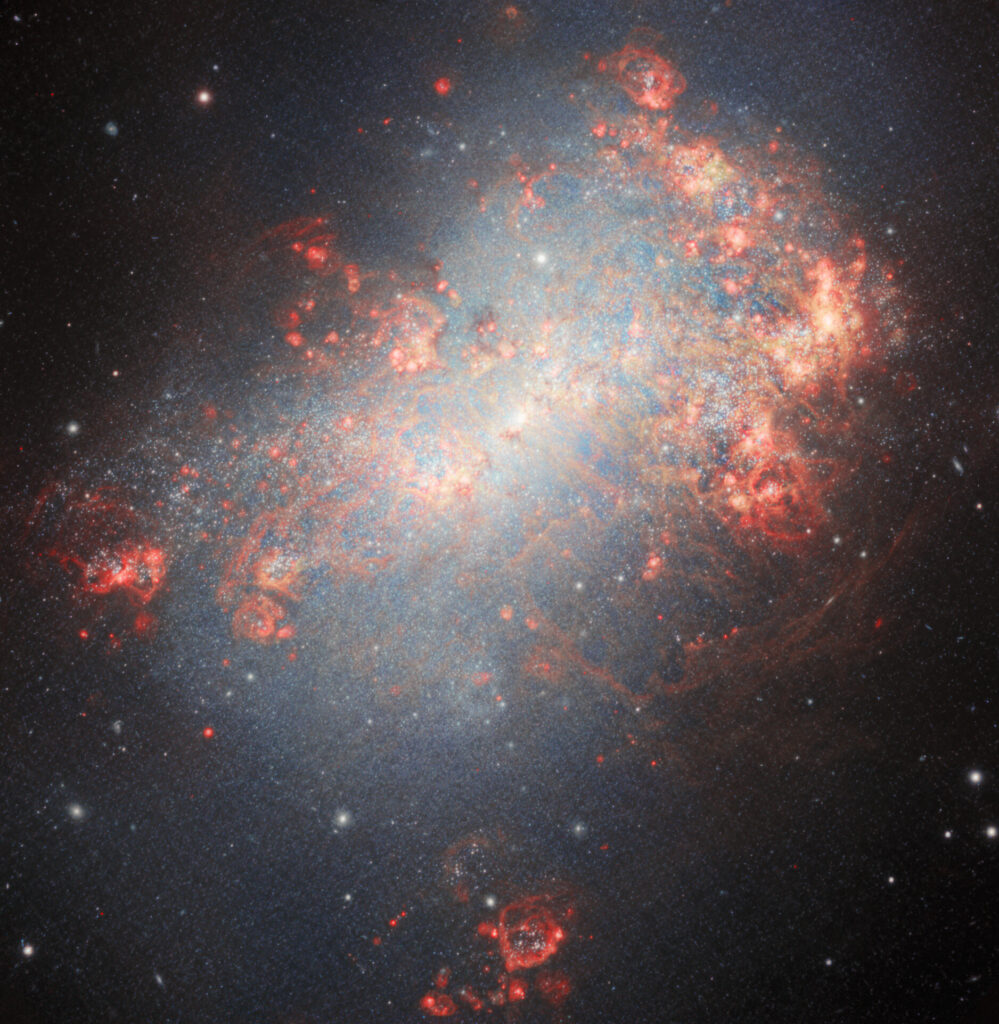In honor of the 25th anniversary of the Gemini North telescope, astronomers have published a “celebratory” image. It shows a confetti-like bright scattering of pink and blue lights. They are all part of the galaxy NGC 4449, which is currently undergoing a burst of star formation.

Most of the visible matter in the Universe, which makes up the stars, planets and us, is formed in the star’s interior by the cycle of birth, life and death. Luminaries are born from gas-dust clouds, and when they die, their remains return to the interstellar medium and become the raw material for the next generation. And in a corner of the Universe 13 million light-years away, the beginning of this cycle is unfolding with extraordinary speed.
NGC 4449 is classified as an irregular Magellanic-type galaxy. This means that, like the Large Magellanic Cloud, it possesses only one spiral arm. Such galaxies occupy an intermediate position between dwarf spiral galaxies and irregular galaxies.
New stars have been actively forming in NGC 4449 for several billion years. But now the rate of star formation in it has grown much faster. Astronomers have identified young luminaries both in its core and in the streams surrounding the galaxy. Because of this, NGC 4449 resembles the earliest galaxies in the Universe, which also formed new stars at a hurricane-like pace.
This activity is due to the interaction of NGC 4449 with its neighbors. It swallows a very faint dwarf galaxy, as evidenced by a scattered stream of stars extending to one side of NGC 4449. Another object that hints at a merger is a massive globular cluster located in the outer halo of NGC 4449. Astronomers believe it is the surviving core of a gas-rich former satellite galaxy that is now in the process of being absorbed by NGC 4449.
The glowing red regions scattered across the image indicate an abundance of ionized hydrogen, a sure sign of ongoing star formation. The blue color corresponds to young star clusters. They are fueled by dark filaments of cosmic dust stretching across the galaxy. Astronomers estimate that at its current rate of growth, NGC 4449 will have enough gas reserves for about another billion years.
The photo of NGC 4449 was published in honor of Gemini North’s 25th anniversary. The opening ceremony of the 8.1-meter telescope took place on June 25, 1999, when its first images were published. At the time, they were among the clearest infrared images ever obtained by a ground-based observatory. Over the ensuing quarter century, Gemini North has made many discoveries, from obtaining the first direct image of a multiplanet system to testing Einstein’s general theory of relativity, which helped astronomers win the 2020 Nobel Prize.
According to NOIRLab


